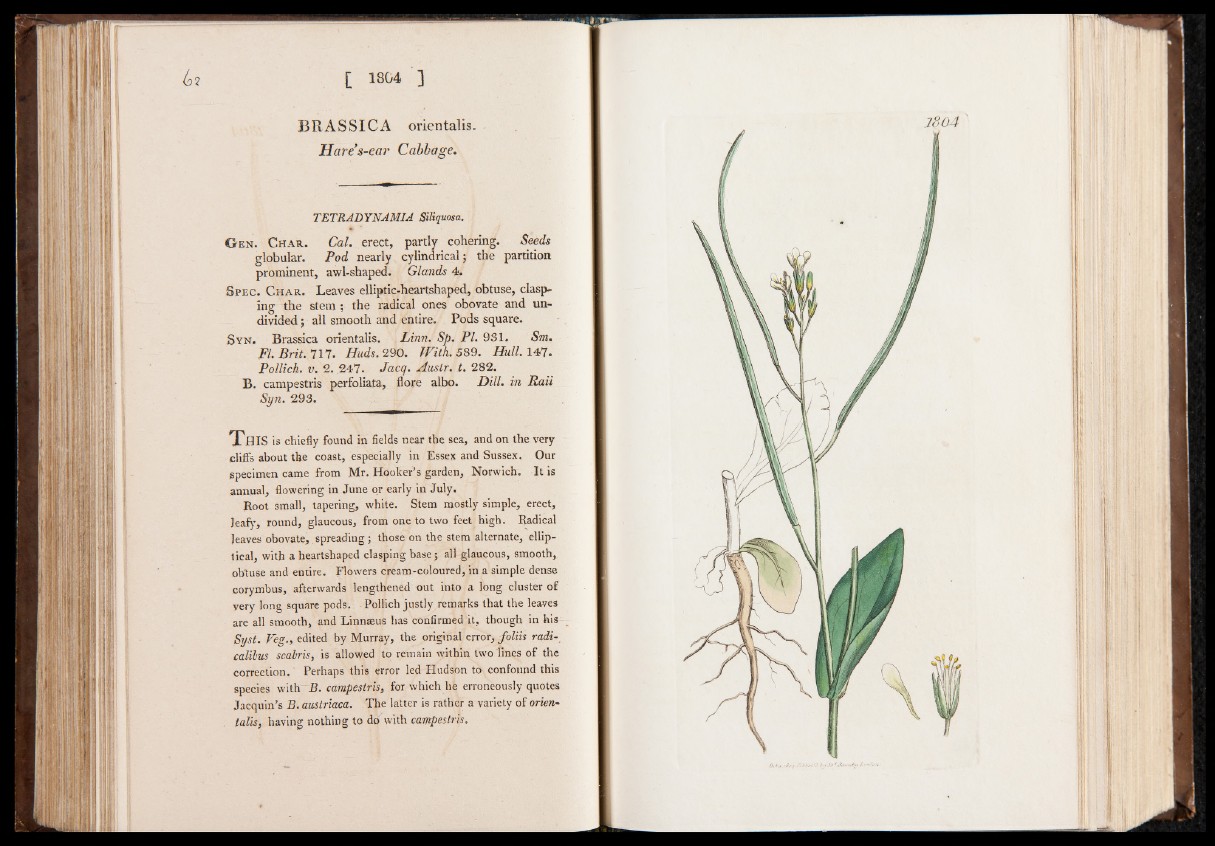
BRASSICA orientalis.
Hai es-ear Cabbage.
TETRADYNAMIA Sttquosa.
G en. Char. Cal. erect, partly cohering. Seeds
globular. Pod nearly cylindrical; the partition
prominent, awl-shaped. Glands 4.
Spec. Char. Leaves elliptic-heartshaped, obtuse, clasping
the stem ; the radical ones obovate and undivided
; all smooth and entire. Pods square.
S yn. Brassica orientalis. Linn. Sp. PI. 931. Sm.
FI. Brit. 717. Huds. 290. With. 589. Hull. 147.
Pollich. v. 2. 247. Jacq. Austr. t. 282.
B. campestris perfoliata, flore albo. Hill, in Rail
Syn. 293,
T h i s is chiefly found in fields near the sea, and on the very
cliffs about the coast, especially in Essex and Sussex. Our
specimen came from Mr. Hooker’s garden, Norwich. It is
annual, flowering in June or early in July.
Root small, tapering, white. Stem mostly simple, erect,
Jeafy, round, glaucous, from one to two feet high. Radical
leaves obovate, spreading; those on the stem alternate, elliptical,
with a heartshaped clasping base; all glaucous, smooth,
obtuse and entire. Flowers cream-coloured, in a simple dense
corymbus, afterwards lengthened out into a long cluster of
very long square pods. Pollich justly remarks that the leaves
are all smooth, and Linnaeus has confirmed it, though in his
Syst. Veg., edited by Murray, the original error, foliis radi-
calilus scalris, is allowed to remain within two lines of the
correction. Perhaps this error led Hudson to confound this
species with B. campestris, for which he erroneously quotes
Jacquin’s B. austriaca. The latter is rather a variety of orient
talis, having nothing to do with campestris.